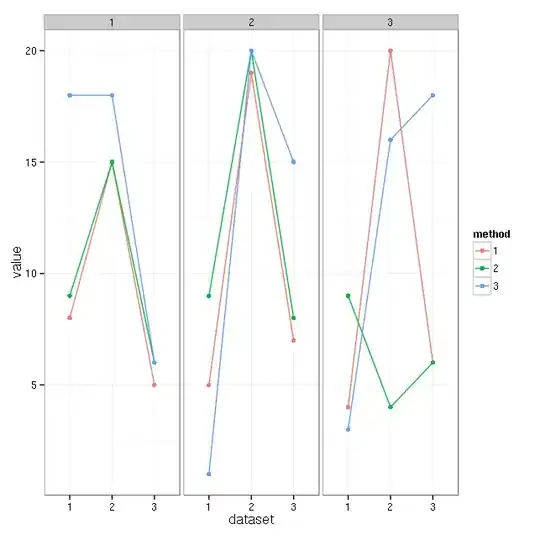I trying to predict some fluid parameters, you will find the data I use in the drive link (24 input and 3 output to predict): DATA. first of all I replaced the null values in the data with the median ,and as you can see I tried with this code but it gives me results nulls.
# Replace the null values in the data with the median
name = input_train.select_dtypes(include = ["int64","float64"]).keys()
def change(x):
if x==0:
return x + name_median
else:
return x
for i in range(0,len(name)) :
name_median = input_train[name[i]].median()
input_train[name[i]] = input_train.apply(lambda row:change(row[name[i]]) , axis = 1)
for i in range(0,len(name)) :
name_median = input_test[name[i]].median()
input_test[name[i]] = input_test.apply(lambda row:change(row[name[i]]) , axis = 1)
# Create a PCA that will retain 95% of the variance
pca = decomposition.PCA(n_components=0.95, whiten=True)
# Conduct PCA
input_train = pca.fit_transform(input_train)
input_test = pca.fit_transform(input_test)
from sklearn.preprocessing import MinMaxScaler
X_scaler = MinMaxScaler()
Y_scaler = MinMaxScaler()
input_train = X_scaler.fit_transform(input_train)
output_train = Y_scaler.fit_transform(output_train)
input_test = X_scaler.fit_transform(input_test)
output_test = Y_scaler.fit_transform(output_test)
def create_model():
model = Sequential()
# Adding the input layer
model.add(Dense(6, activation='relu', input_shape=(n_cols,)))
# Adding the hidden layer
model.add(Dense(6, activation='relu'))
model.add(Dense(6, activation='relu'))
model.add(Dense(1, activation='relu'))
# Compiling the RNN
model.compile(optimizer='adam', loss='mean_absolute_percentage_error')
return model
kf = KFold(n_splits = 10, shuffle = True)
Elasticity = create_model()
scores = []
# K=1
result = next(kf.split(input_train), None)
X_train = input_train[result[0]]
X_test = input_train[result[1]]
Y_train = output_train[result[0]]
Y_test = output_train[result[1]]
# Fitting the RNN to the Training set
Elasticity.fit(X_train, Y_train, epochs=300 ,batch_size=180 ,verbose=2)
predictions = Elasticity.predict(X_test)
scores.append(Elasticity.evaluate(X_test, Y_test))
print(scores)
>>>54/54 [==============================] - 0s 628us/step
[100.0]
# Visualising Result
plt.figure
plt.plot(predictions, color='blue', label='Predicted results')
plt.plot(Y_test, color='red', label='Real results')
plt.title('Visualisation')
plt.xlabel('Batch')
plt.ylabel('Elasticity')
plt.legend()
plt.show()
